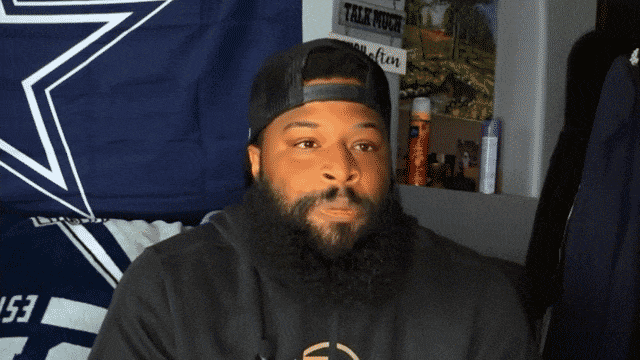“Texas Tough” McKay Law
Texas Trip and Fall Accident Lawyer
When life takes an unexpected turn, McKay Law is here to help you get back on your feet. As a trusted Texas Trip and Fall Accident Lawyer, McKay Law specializes in advocating for individuals who have suffered injuries due to unsafe conditions. With a deep understanding of personal injury law and a commitment to justice, our team fights tirelessly to ensure you receive the compensation you deserve. Whether it’s a slip on a wet floor or a fall caused by hazardous property conditions, McKay Law is your dedicated partner in holding negligent parties accountable. Let us handle the legal complexities so you can focus on healing.
NO FEES UNLESS WE WIN!
We only get paid when you get paid.
Receive Immediate Medical Care
Get the medical attention you need with no out-of-pocket cost in most cases.
24/7 Access To Us
We are here for you 24/7 so you can focus on healing.
Client Satisfaction
McKay Law has a reputation to be proud of with 300+ 5 star Google Reviews.
Texas Trip and Fall Accident Attorney | McKay Law
When you’ve suffered a trip and fall accident, finding the right attorney can make all the difference. McKay Law has built a strong reputation in Texas for their unmatched expertise in handling trip and fall cases. With a deep understanding of the intricate laws surrounding premises liability, they aggressively pursue justice for victims who have been injured due to unsafe conditions. Their team carefully investigates each case, gathering critical evidence to prove negligence and ensuring clients receive the compensation they deserve for medical expenses, lost wages, and more.
At McKay Law, client advocacy is at the heart of their practice. They take the time to listen to your story, focusing on your needs while building a tailored legal strategy. McKay Law is known for their compassionate approach, treating every client with the care and respect they deserve, while standing as a fierce advocate against corporate tactics or property owners who attempt to deny liability. Their dedication has earned them the trust of countless individuals across Texas who needed a trusted ally during a challenging time.
If you or a loved one has been injured in a trip and fall accident, don’t wait to take action. Contact McKay Law today for a free consultation. Their experienced team is ready to fight for you, ensuring your voice is heard and your rights are protected every step of the way. Take the first step toward justice by reaching out now — you don’t have to face this alone.
Understanding Trip and Fall Accidents in Texas
1. What is a Trip and Fall Injury Claim?
A trip and fall injury claim is a type of personal injury case that arises when someone is injured due to unsafe conditions on someone else’s property. These claims fall under the broader category of premises liability law.
2. Premises Liability in Texas
In Texas, property owners have a legal duty to maintain their premises in a reasonably safe condition. If they fail to do so and someone is injured as a result, the injured party may have grounds to file a claim. However, the level of responsibility depends on the injured person’s status on the property:
- Invitee: Someone invited onto the property for business purposes (e.g., a customer in a store). Property owners owe the highest duty of care to invitees.
- Licensee: Someone allowed on the property for non-business purposes (e.g., a social guest). Property owners must warn licensees of known dangers.
- Trespasser: Someone who enters the property without permission. Property owners generally owe no duty of care to trespassers, except in certain cases (e.g., children).
3. Common Causes of Trip and Fall Accidents
- Uneven flooring or pavement
- Poor lighting
- Wet or slippery surfaces
- Loose rugs or carpets
- Cluttered walkways
- Broken stairs or handrails
4. Proving a Trip and Fall Claim
To succeed in a trip and fall injury claim in Texas, the injured party must prove:
- Duty of Care: The property owner owed a duty of care to the injured person.
- Breach of Duty: The property owner failed to maintain a safe environment or warn of hazards.
- Causation: The breach of duty directly caused the injury.
- Damages: The injured party suffered actual damages (e.g., medical bills, lost wages, pain and suffering).
5. Comparative Negligence in Texas
Texas follows a modified comparative negligence rule, meaning that if the injured party is partially at fault for the accident, their compensation may be reduced by their percentage of fault. If they are found to be more than 50% at fault, they cannot recover damages.
6. Statute of Limitations
In Texas, the statute of limitations for filing a personal injury claim, including trip and fall cases, is two years from the date of the accident. Failing to file within this timeframe may result in losing the right to seek compensation.
7. Compensation
Victims of trip and fall accidents may be entitled to compensation for:
- Medical expenses
- Lost wages
- Pain and suffering
- Rehabilitation costs
- Future medical care
If you’re dealing with a specific case or need more tailored advice, consulting a personal injury attorney in Texas is highly recommended. They can help evaluate the details of your case and guide you through the legal process.
Lindsey McKay Takes Texas Trip and Fall Cases Seriously
Navigating life after a trip and fall injury can feel overwhelming. Medical bills, lost wages, and the physical and emotional toll can quickly pile up. If you’re in Texas, you need someone who truly understands the complexities of trip and fall cases and fights relentlessly to secure justice. That’s where Lindsey McKay comes in. With her breadth of legal expertise, dedication to her clients, and compassionate approach, Lindsey McKay has established herself as a trusted advocate for individuals injured in trip and fall accidents.
Compassionate Advocacy for Injured Texans
Trip and fall accidents are deceptively common. Whether caused by uneven sidewalks, cluttered store aisles, or negligent property maintenance, these accidents can result in serious injuries like fractures, concussions, or spinal damage. Lindsey McKay knows that these injuries don’t just disrupt your physical health—they can impact every aspect of your life.
What sets Lindsey apart is her ability to step into her clients’ shoes. She listens intently to their stories, ensuring she understands the full scope of their pain and hardship. “My clients are often dealing with more than just physical pain—they’re juggling the emotional strain and financial uncertainty that come with unexpected injuries,” Lindsey says. “It’s my job to ease their burden by fighting for rightful compensation so they can focus on recovery.”
Proficiency in Texas Premises Liability Laws
Winning a trip and fall injury case requires more than just empathy—it demands thorough knowledge of Texas premises liability laws, and that’s an arena where Lindsey McKay shines. Texas is a “fault-based” state, requiring plaintiffs to demonstrate that a property owner or manager’s negligence caused the accident. This isn’t as straightforward as it may seem. Factors like “duty of care” (a property owner’s responsibility to maintain safe conditions) and “comparative negligence” (assigning partial fault to the injured person) can complicate cases.
Lindsey leverages her deep understanding of these nuances to build ironclad cases for her clients. She works diligently to prove that:
- The property owner knew—or should have known—about the unsafe condition.
- The hazard wasn’t adequately addressed or warned against.
- The unsafe condition caused her client’s injury.
Her thorough preparation and mastery of Texas law ensure that every detail is accounted for, setting clients up for success.
Strategic and Tenacious Case Handling
Trip and fall cases often involve multiple layers of complexity. Competing narratives, lack of clear evidence, and aggressive insurance companies can make pursuing compensation frustrating. However, Lindsey McKay thrives in these challenging scenarios. Her approach is rooted in meticulous investigation and strategic thinking.
For instance, Lindsey and her team often collect critical evidence such as surveillance footage, eyewitness testimonies, and accident scene photographs. They also work with medical professionals to establish a clear connection between the accident and the injuries sustained. This comprehensive approach ensures no stone is left unturned.
It’s not just about gathering evidence—Lindsey understands the power of negotiation. Many times, insurance companies attempt to minimize injury claims to protect their bottom lines. Lindsey counters these efforts with tenacity and skill, negotiating confidently on her clients’ behalf. And if a fair settlement isn’t possible? She’s fully prepared to take the case to court. Her record speaks to her ability to secure favorable outcomes, both in and out of the courtroom.
Real Results, Real Impact
The true measure of Lindsey McKay’s dedication lies in the results she delivers for her clients. One memorable case involved a client who tripped on an uneven entryway while entering a local business. The client suffered severe injuries, including a broken hip, that required extensive surgery and rehabilitation. Initially, the business’s insurance company denied responsibility, arguing that the condition wasn’t hazardous.
Lindsey took control of the case, conducting a thorough investigation that revealed prior complaints about the entryway’s condition. She presented this evidence alongside expert testimony from an accident reconstruction specialist. After relentless negotiation, the client received a settlement that covered their medical expenses, lost wages, and additional compensation for pain and suffering.
Stories like this are why Lindsey’s clients describe her as not just their attorney but also their ally and advocate. Her goal is always the same—to ensure her clients receive the justice and financial support they deserve.
Why Lindsey McKay Stands Out
When clients choose Lindsey McKay, they gain a legal professional who embodies both expertise and genuine care. Every trip and fall injury case is unique, and Lindsey treats it as such, tailoring her strategy to the specific needs and circumstances of each client. From initial consultations to final resolutions, she is committed to transparency and open communication. Her clients know they’re not just a case number—they’re people whose lives and futures matter deeply to her.
Her passion for justice doesn’t stop at winning cases. Lindsey is a firm believer in educating her clients so they can make empowered decisions every step of the way. “A well-informed client is a strong client,” she says. “My job isn’t just to represent them but to ensure they feel confident and supported throughout the legal process.”
When You Need Someone in Your Corner
Trip and fall injuries can disrupt your life in ways you never expected, but you don’t have to face the aftermath alone. Lindsey McKay takes Texas trip and fall injury cases seriously because she knows how life-changing they can be. Her combination of legal expertise, compassion, and tireless work ethic positions her as a powerful ally for injured Texans seeking justice.
If you’ve suffered a trip and fall injury due to someone else’s negligence, take the first step toward recovery by reaching out to Lindsey McKay. With her in your corner, you can focus on healing while she handles the fight for the compensation you deserve.
What Are The Most Common Types of Trip and Fall Injuries In Texas?
Trip and fall injuries are a common type of personal injury, and in Texas, as elsewhere, they can result from a variety of hazards. Here are some of the most common types of trip and fall injuries:
- Commonly affect wrists, arms, ankles, and hips as people instinctively try to break their fall.
- Hip fractures are particularly serious, especially for older adults.
Sprains and Strains
- Often involve the ankles, knees, or wrists.
- These injuries occur when ligaments or muscles are overstretched or torn during a fall.
- Includes concussions, traumatic brain injuries (TBIs), or skull fractures.
- Even a seemingly minor head injury can have long-term effects.
- Can range from herniated discs to more severe spinal cord damage, potentially leading to paralysis.
- These injuries often result from falls on hard surfaces or down stairs.
- Caused by sharp objects or rough surfaces during a fall.
- May require stitches or lead to scarring.
- Includes torn ligaments (like ACL or MCL tears), dislocations, or fractures.
- Often occur when the knee twists awkwardly during a fall.
- Includes dislocations, fractures, or rotator cuff tears.
- These injuries can happen when someone lands on their shoulder or tries to catch themselves.
Bruises and Contusions
- While less severe, these can still be painful and may indicate underlying injuries.
- Falls can cause damage to internal organs or internal bleeding, which may not be immediately apparent.
- Includes broken noses, dental injuries, or eye trauma.
- Often result from falling forward onto a hard surface.
In Texas, property owners have a legal duty to maintain safe premises. If a trip and fall injury occurs due to negligence (e.g., uneven sidewalks, wet floors, poor lighting), the injured party may have grounds for a personal injury claim.
What Damages Can I Receive from a Texas Trip and Fall Accident Claim?
A trip and fall accident can be a traumatic experience, often leaving victims with serious injuries, unexpected expenses, and many unanswered questions about their legal rights. These accidents can happen almost anywhere—on uneven sidewalks, in poorly maintained stores, or on hazardous stairways—and the impact can be life-changing. If you’ve suffered a trip and fall accident in Texas, you may be wondering what compensation you’re entitled to claim and how to begin the process of seeking justice. Understanding the types of damages you can pursue is key to securing the financial recovery you need to move forward and regain control of your life.
In Texas, trip and fall claims typically involve three main categories of damages: economic, non-economic, and punitive. Economic damages cover tangible losses such as medical bills, lost wages, and rehabilitation costs, while non-economic damages address intangible impacts like pain, suffering, and emotional distress. Punitive damages, on the other hand, are designed to punish particularly negligent behavior and deter similar actions in the future.
Below, we’ll dive deeper into these categories of damages, providing examples to clarify what each may include and how they can support your recovery. By the end of this post, you’ll have a clearer picture of what your potential claim could look like and the steps you may want to take to protect your rights.
Economic Damages
Economic damages are quantifiable financial losses that result directly from an accident. These damages compensate victims for the out-of-pocket costs incurred due to their injuries.
1. Medical Expenses
Medical bills can pile up quickly after a trip and fall accident. Economic damages aim to cover both immediate and future healthcare expenses related to your injuries.
Examples of medical costs you may recover include:
- Emergency room visits
- Surgeries
- Hospital stays
- Physical therapy or rehabilitation
- Medication costs
- Assistive devices (e.g., crutches or wheelchairs)
For example, if you fractured your hip in a fall and required surgery followed by a lengthy physical therapy program, the total cost of treatment could be included in your claim. Additionally, future medical needs, such as ongoing therapy or future surgeries, can also be factored into your economic damages.
2. Lost Wages and Loss of Earning Capacity
A trip and fall injury could prevent you from working temporarily or permanently. Economic damages provide compensation for lost wages during your recovery period and, when applicable, for a reduced ability to earn income in the future.
For instance, if you work as a construction worker and suffer a back injury that prevents you from lifting heavy objects, this could affect your ability to perform your job. Compensation for loss of earning capacity takes the long-term impact on your career and income into consideration.
3. Other Out-of-Pocket Expenses
There are often additional costs associated with a serious injury. These might include expenses such as transportation to medical appointments, home modifications to accommodate a disability, or childcare services while you recover.
Example: If your injury prevents you from driving and requires you to hire a rideshare service or pay for a medical transport service, these expenses could be reimbursed as part of your economic damages.
Non-Economic Damages
Non-economic damages are more subjective and aim to compensate victims for the physical and emotional toll of their injuries. While harder to quantify, they are just as significant as economic damages.
1. Pain and Suffering
This compensation accounts for the physical pain caused by your injury. It takes into consideration the severity of your injuries, the level of discomfort endured, and how your daily life has been affected.
Example: A severe shoulder injury from a sidewalk trip may leave you unable to perform routine tasks like carrying groceries or reaching above your head. These limitations, in addition to the pain you experience, are factors in calculating pain and suffering damages.
2. Mental Anguish and Emotional Distress
A trip and fall injury can be emotionally devastating. Victims may suffer from anxiety, depression, or even post-traumatic stress disorder (PTSD) following an accident. Non-economic damages aim to address this emotional suffering.
For example, someone left traumatized after a fall in a grocery store might develop a fear of public spaces, impacting their independence and quality of life. This emotional distress is a valid component of a claim.
3. Loss of Enjoyment of Life
Serious injuries can prevent you from enjoying hobbies, pastimes, and activities that once brought you joy. Whether it’s gardening, playing with your children, or participating in sports, this loss is compensable. Non-economic damages seek to restore, at least partially, the joy and fulfillment you’ve lost due to your injury.
4. Loss of Consortium
If your injuries have adversely affected your relationships—for instance, causing a strain on your marriage—non-economic damages can include compensation for loss of consortium. This damage category addresses the negative impact on your ability to maintain close relationships due to the accident.
Punitive Damages
Unlike economic and non-economic damages, punitive damages are less common. They are awarded in cases where the at-fault party’s behavior was particularly reckless, grossly negligent, or intentional. The purpose of punitive damages is not to compensate the victim but to punish the wrongdoer and deter similar behavior in the future.
For instance, if a property owner blatantly ignored multiple safety violations or knowingly failed to address hazardous conditions, this misconduct might justify punitive damages.
Are Punitive Damages Easy to Obtain?
No, punitive damages are rare and require a higher burden of proof. Your attorney would need to demonstrate clear and convincing evidence of the defendant’s egregious behavior. While challenging to pursue, they can result in significant additional compensation if awarded.
Why Legal Guidance Is Essential
Navigating a Texas trip and fall accident claim can be complex, particularly when assessing the full scope of damages you’re entitled to recover. An experienced personal injury attorney will:
- Gather evidence to support your claim
- Ensure all past, present, and future losses are accurately accounted for
- Negotiate assertively with insurance companies on your behalf
- File a lawsuit if necessary to secure maximum compensation
It’s important to note that Texas follows a modified comparative negligence rule, meaning your claim could be reduced if you’re found partially at fault. Working with an attorney can help you counter any efforts to unfairly shift blame onto you.
Take the First Step Today
If you’ve been injured in a trip and fall accident in Texas, don’t delay in seeking professional advice. An attorney can evaluate your case, explain your rights, and guide you through the legal process to pursue the justice you deserve.
Contact a personal injury attorney today to schedule a consultation and take the first step towards your recovery. With the right support, you can secure the compensation you need to rebuild and move forward.
The Texas Tough Difference
See why so many others choose McKay Law, PLLC
With over 300 five-star reviews, McKay Law, your local Personal Injury Law Firm has earned the trust and gratitude of our clients. Every case we handle is unique, and every client’s story matters. Don’t just take our word for it—hear directly from our clients about their experiences and why they confidently recommend us to others.
Trip and Fall Accident FAQs
A trip and fall accident occurs when someone trips over an object, uneven surface, or hazard and sustains an injury. These accidents often happen due to unsafe conditions like poorly maintained walkways, clutter, or inadequate lighting.
Common causes include:
- Uneven or cracked sidewalks
- Loose rugs or carpets
- Poor lighting
- Cluttered walkways
- Wet or slippery floors
- Unmarked hazards like cables or cords
Responsibility depends on the circumstances. Property owners, landlords, or businesses may be liable if they failed to maintain safe conditions or warn about hazards. However, the injured person may also share responsibility if they were not paying attention.
- Seek medical attention for any injuries.
- Document the scene with photos or videos.
- Report the incident to the property owner or manager.
- Collect contact information from witnesses.
- Keep records of medical bills and other expenses.
Yes, you can file a lawsuit if the accident was caused by someone else's negligence. Consulting a personal injury attorney can help determine if you have a valid claim.
Common injuries include:
- Sprains and strains
- Broken bones
- Head injuries or concussions
- Cuts and bruises
- Back and spinal injuries
- Wrist or hand fractures from bracing the fall
To prove negligence, you must show:
- A hazardous condition existed.
- The property owner knew or should have known about the hazard.
- The owner failed to address or warn about the hazard.
- The hazard caused your injury.
The time limit, or statute of limitations, varies by state. Typically, you have 1-3 years from the date of the accident to file a claim. Check your local laws or consult an attorney for specifics.
You may be entitled to compensation for:
- Medical expenses
- Lost wages
- Pain and suffering
- Rehabilitation costs
- Property damage (e.g., broken glasses or phone)
While not mandatory, hiring a lawyer can significantly improve your chances of receiving fair compensation. An experienced attorney can gather evidence, negotiate with insurance companies, and represent you in court if necessary.






